View current page
...more recent posts
Modern Art Notes spotted a funny headline over a recent NY Observer review by neocon grump Hilton Kramer: "Realist Richard Baker Confers His Anxiety On Tulips, Lemons." It's the bored headline writer's revenge for having to read a by-the-numbers, ridiculously hedged review. Kramer's main point (I think) isn't that Baker makes still life subjects anxious, but that the artist dissipates his talent in not-so-clever pictorial tricks calling attention to the paint medium. A more accurate (and Kramer-like) tag would be "Self-Reflexive Shenanigans Drain Needed Anxiety from Tulips, Lemons."
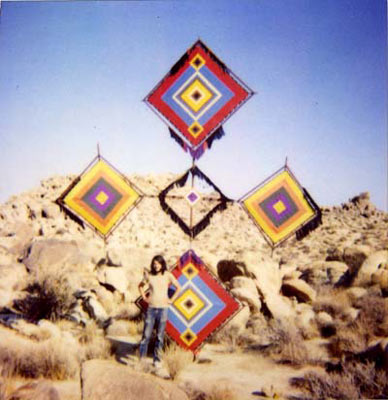
Been thinking about hippies lately. Not just me, the art world is going through (yet another interminable) hippie phase, inspired by "the rise of the new art collectives" and/or the salesmanship of gallerists Daniel Reich and John Connelly--some cynics say they're one and the same phenomenon. (Not saying I'm saying that, but have had a couple of impassioned discussions with people in the last week who think the 2003 Holland Cotter article identifying art collectives as a national trend was either part of an elaborate marketing scheme or a lazy writer being handed a package by a dealer--"collectives" being a more or less constant, short-lived byproduct of kids meeting up in art school.)
Christopher Hitchens, in a recent diatribe about how much the left sucks, sought to condense the whole 60s counterculture down to one image of lame misguidedness: the commune 20-somethings in Easy Rider scattering seed in the dusty furrows of the land where they have to come to "make their stand." That socks it home all right--but doesn't give the film credit for being a smart and subtle critique of the very phenomenon it was selling: right after the shot of the barefoot seed-sowers, the camera pulls back and lingers over a western landscape that is mountainous and dry, dry, dry. Just as you're thinking that, Peter Fonda says, "Do you get much rain out here?" (And then later, incongruously, opines "They're gonna make it.")
The photo above is a work from Justin Samson's current show at John Connelly Presents. I assume this is a sculpture Samson made and am guessing it was for a residency at Andrea Zittel's Joshua Tree, CA, studio/project space High Desert Test Sites, so no actual hippies were involved. Below is the Mondo Mondo Trading Post, which Matt Savitsky and Kevin McGarry erect outside strip mall coffee shops, bookstores and the like to trade Perler bead souvenirs. Again, no bonafide tuning in, turning on, or dropping out is occurring--day jobs are preserved while we are reminded of our buckskin past, just as in Little House on the Prairie reruns. I actually like McGarry's and Savitsky's project, and I like the Samson photo, but am just wondering--what is it with artists and hippies these days? Is it yet another media critique? (They loved the 60s back in the 80s too--loved to make fun of them--as in Kenny Scharf's sardonic black light rooms and Halley's Day Glo paints.) Is it some unironic yearning for "the real" amongst all the Starbucks simu-culture? A little of both? Can those be mixed?
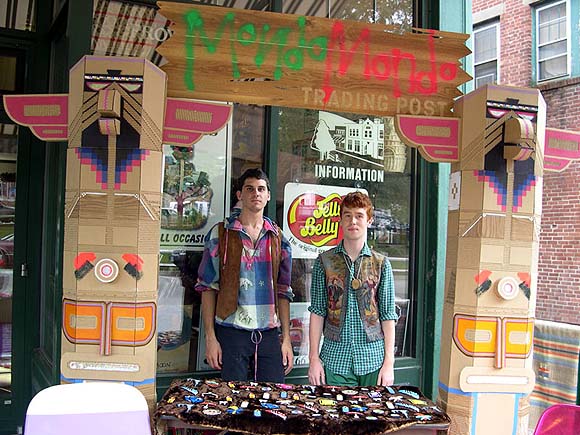
The Rude Pundit imagines what Hogan's Heroes would be like in the current world of Bush-encouraged torture:
Every other time Hogan had invoked the Geneva Convention (for instance, "Colonel Klink, I must protest as a violation of the Geneva Convention the private interrogation of my men by a Gestapo officer"), Klink had crumbled like a house of cards. But when he tried this time, he was slammed face down on the Klink's desk as the Commandant exhaled a frustrated, "Hooogannnn. I'll show you what we think of the Geneva Convention." And then Hogan heard a thick sheaf of papers being rolled tightly. Well, this is poetic, Hogan thought, just before he felt the searing pain of the Geneva Conventions being shoved into his ass. Schultz protested briefly, but Klink asked the bumbling Sergeant what he would say to any investigators.
"I see noth-ink," he exclaimed. "I see noth-ink."
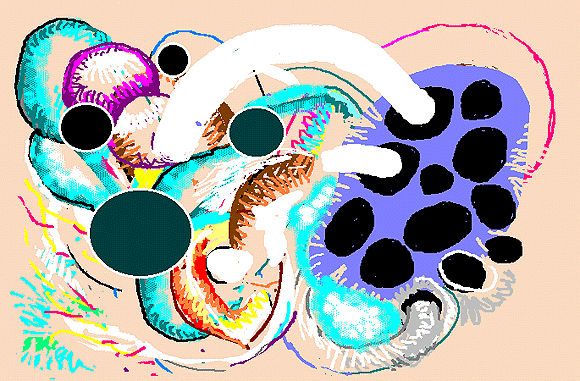
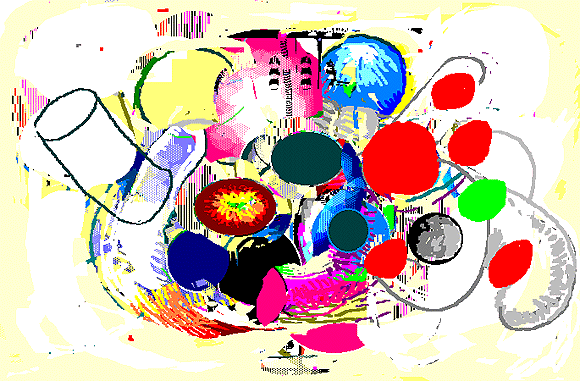
More wormy art drawn in my cubicle (today).
"Happy E-tune" (Dance Party Remix). [mp3 removed] In which four melodic parts that bring new meaning to the word jaunty get the full remix treatment, with a phased drum break. The overlapping synth voices are like a conversation where people keep interrupting each other.
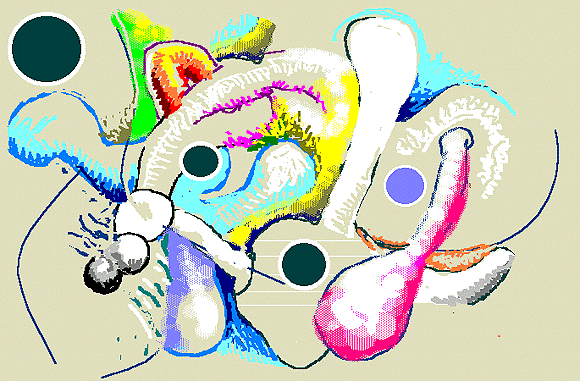
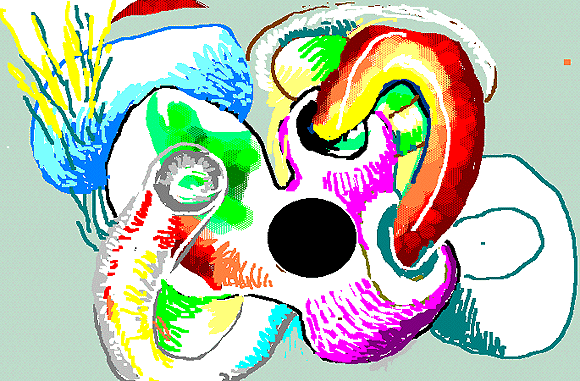
Drawn at "work" in my cubicle Tuesday and today. I didn't feel like doing portraits, I felt like doing wormy, noodly things.
Quick take: Listened to Gary Wilson's Mary Had Brown Hair again last night, and am in awe of his music and art. I mean to do a proper review eventually, and posted some other people's thoughts here. I don't think he is "just a weirdo," I think his "loser mooning over old girlfriends" is a carefully thought out persona and his music as tight and smart as any I've heard. I would compare MHBH to the Mothers' We're Only In It for the Money, partly, obviously, because Wilson disguises his vocals by speeding them up the way Zappa did, but also for its intriguing combination of humor, poignancy, and Cagean noise aesthetics. Sped up or not, I love what the Dusted reviewer calls Wilson's "white soul bro" voice--the way he lapses from singing into just talking,or rambling, about those (fantasy?) femmes who won't stop circling around inside his brain.
Jack Masters: "Yes, with only MS paint, a lousy gif animator, and something to generate random numbers, you too can make this seething mass of pixelated fractally horror."

Rotating smile emoticon html-enlarged by cosmic_disciple (Travis Hallenbeck).
